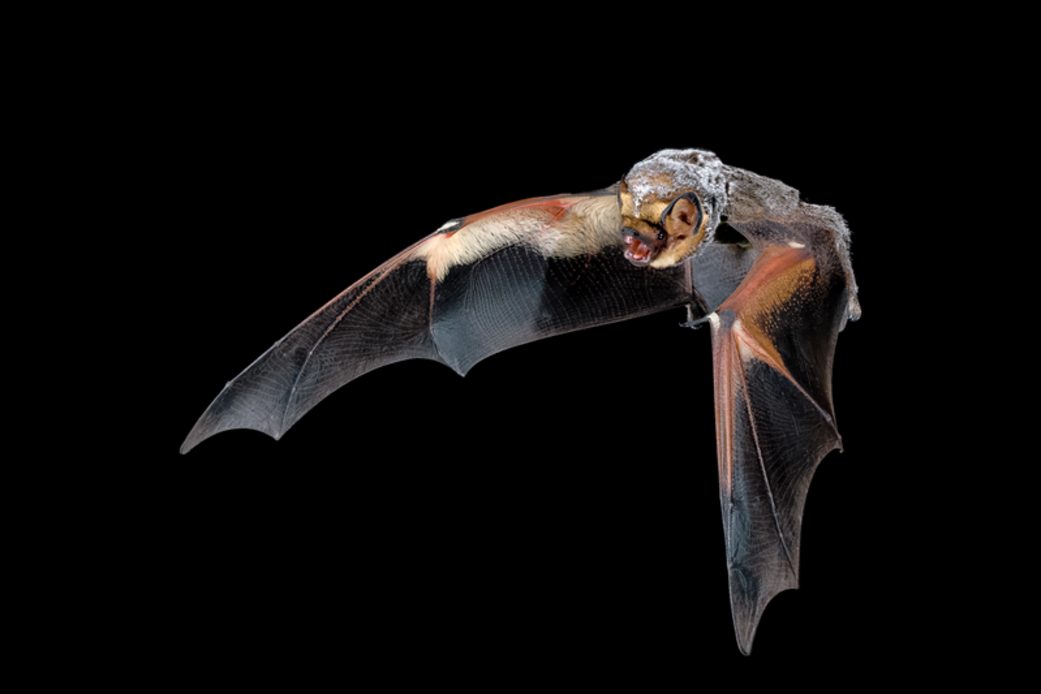Science
Millions of Bats Killed by Wind Turbines; Smart Tech Offers Hope

Bats are facing a significant threat from wind turbines, with millions killed each year due to collisions and other factors. According to the UN Environment Programme, the estimated annual bat fatalities include around 50,000 in Canada, over 200,000 in Germany, and more than 500,000 in the United States. As these creatures play essential roles in ecosystems and economies, conservationists are advocating for smarter solutions to mitigate the impact of renewable energy sources.
Bats, found on every continent except Antarctica, are experiencing population declines primarily due to habitat loss, disease, and pesticide use. However, the rise of wind energy has introduced a new and growing threat. Professor Winifred Frick, chief scientist at Bat Conservation International, highlights the ecological importance of bats, noting they control agricultural pests, disperse seeds, and pollinate crops. For instance, the Mexican long-nosed and lesser long-nosed bats are vital for pollinating the agave plant, essential for tequila production.
Understanding the Problem
Research initially identified barotrauma, caused by pressure changes near turbine blades, as a significant cause of bat fatalities. More recent studies, however, indicate that most bats die from direct collisions with turbine blades. Regardless of the cause, Frick emphasizes the urgent need to protect bats, stating, “Bats are being killed in their millions.” While wind energy accounts for 8% of global electricity generation, it is crucial to implement responsible practices that do not compromise bat populations.
Before constructing wind farms, developers typically undertake an Environmental Impact Assessment to evaluate potential effects on wildlife and habitats. A spokesperson for the Global Wind Energy Council (GWEC) indicated that nature reserves and significant biodiversity areas are generally excluded from wind farm sites. Despite these regulations, enforcement varies globally, and voluntary compliance is often inadequate.
Currently, the most common strategy to protect bats is “blanket curtailment,” which involves stopping turbine operation at low wind speeds when bats are most active. Research shows this method can reduce bat fatalities by over 60% during specific time windows, yet it can also decrease energy generation by more than 10% in some regions.
Innovative Solutions on the Horizon
To address the energy loss associated with blanket curtailment, the concept of “smart curtailment” is gaining traction. This approach utilizes sensors attached to turbines to detect bat echolocation sounds. According to Kevin Denman, managing director of EchoSense, their system allows turbines to operate safely by stopping them only when bats are detected. A 2023 study co-funded by the US Department of Energy found that this method could recover approximately 50% of energy lost with blanket curtailment, while maintaining similar levels of bat protection.
Various companies are developing detection systems globally. For instance, Biodiv-Wind in France employs infrared cameras for bat detection, while DTBird & DTBat in Spain uses artificial intelligence to identify bat species in real time. Such technologies could enable selective curtailment for endangered species, as noted by Roger Rodriguez, a bat biologist at EchoSense.
The GWEC has expressed support for these advancements, stating that the wind industry is committed to balancing renewable electricity generation with nature protection. The spokesperson emphasized that bio-acoustic technologies are often essential in ensuring turbines operate with minimal risk to local bat populations.
Another innovative approach involves ultrasonic deterrents designed to keep bats away from the rotor-swept area of turbines. According to Leon Hailstones, marketing vice president at NRG Systems, this technology emits ultrasonic sounds that are inaudible to humans but may disrupt bats’ echolocation, encouraging them to avoid the danger zone. Although some studies indicate that such deterrents can reduce fatalities for certain bat species, there are concerns that they may inadvertently increase risks for others due to bats’ natural curiosity.
As research continues, Hailstones noted that NRG Systems is refining the positioning of its deterrents to enhance their effectiveness. Frick argues for a holistic approach to wildlife protection, advocating for careful turbine placement and operation strategies that minimize ecological risks.
The intersection of renewable energy and wildlife conservation presents complex challenges, but with innovative technologies and responsible practices, there is hope for both bats and the wind energy industry to coexist sustainably.
-

 Technology5 months ago
Technology5 months agoDiscover the Top 10 Calorie Counting Apps of 2025
-

 Technology3 weeks ago
Technology3 weeks agoOpenAI to Implement Age Verification for ChatGPT by December 2025
-

 Health3 months ago
Health3 months agoBella Hadid Shares Health Update After Treatment for Lyme Disease
-

 Health4 months ago
Health4 months agoAnalysts Project Stronger Growth for Apple’s iPhone 17 Lineup
-

 Health4 months ago
Health4 months agoErin Bates Shares Recovery Update Following Sepsis Complications
-

 Technology5 months ago
Technology5 months agoDiscover How to Reverse Image Search Using ChatGPT Effortlessly
-

 Technology3 months ago
Technology3 months agoElectric Moto Influencer Surronster Arrested in Tijuana
-

 Technology5 months ago
Technology5 months agoMeta Initiates $60B AI Data Center Expansion, Starting in Ohio
-

 Technology2 months ago
Technology2 months agoDiscover 2025’s Top GPUs for Exceptional 4K Gaming Performance
-

 Technology5 months ago
Technology5 months agoRecovering a Suspended TikTok Account: A Step-by-Step Guide
-

 Health5 months ago
Health5 months agoTested: Rab Firewall Mountain Jacket Survives Harsh Conditions
-

 Lifestyle5 months ago
Lifestyle5 months agoBelton Family Reunites After Daughter Survives Hill Country Floods





















